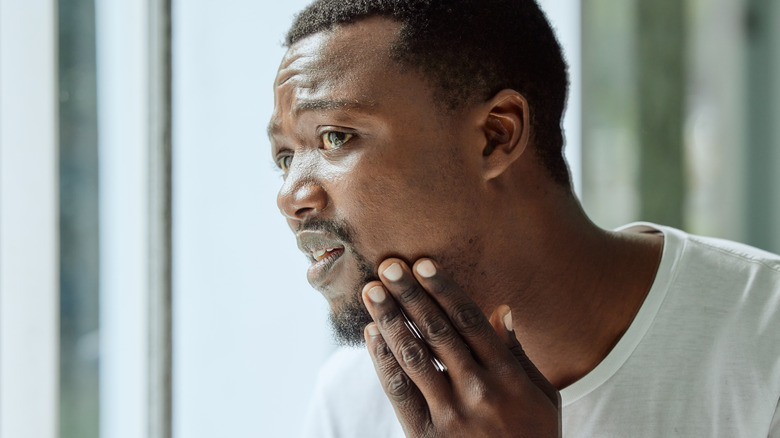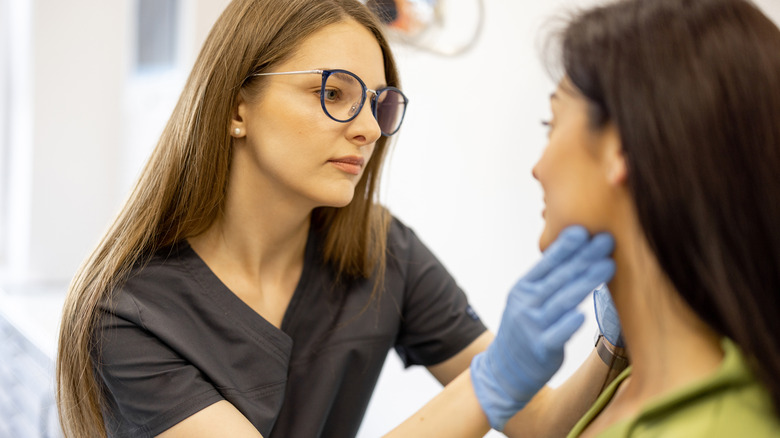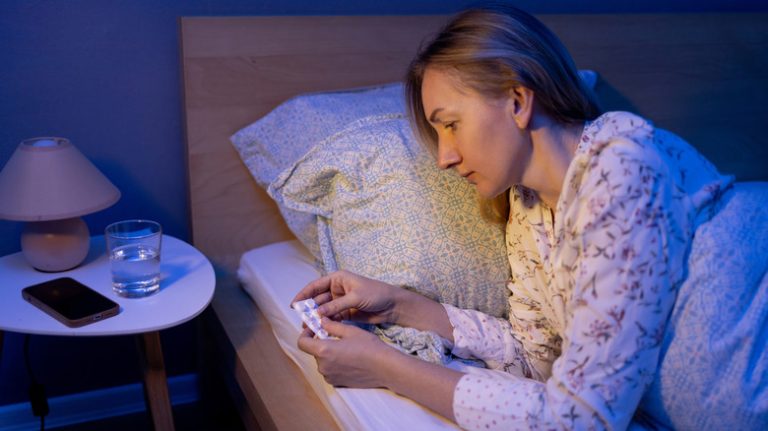
Your doctor may suggest the long-term daily use of corticosteroids for chronic conditions such as arthritis, asthma, eczema, lupus, tendonitis, or a related inflammatory disease. Corticosteroids like prednisone can alleviate the symptoms of these issues; however, the drugs are known for two side effects that can change your facial shape and appearance.
The first change related to the face is often called “moon face.” Experiencing a moon face (or what some refer to as “cortisol face”) due to prednisone side effects means that your face has become rounder, particularly in the areas in front of your ears. Board-certified dermatologist Dr. Gary Goldenberg notes that “you can get that from extremely high corticosteroid levels from taking steroids for a medical condition” (via Prevention). If you notice that your face appears swollen after using a corticosteroid, it may be wise to consult your doctor. One method to reduce moon face is to decrease the dosage of the medication or switch to a different one.
Not everyone who takes corticosteroids will experience moon face, but you might encounter another potential facial side effect: steroid acne. (Read about other causes of acne flare-ups you might not know.)
Dealing with unpredictable pimples

Steroid acne may develop as a reaction to the anti-inflammatory effects of a corticosteroid after several weeks of use. As the corticosteroids start working, they may increase the activity of toll-like receptor 2s, which are molecules that can lead to the formation of acne.
Those who develop steroid acne often see a variety of blemish types. Steroid acne can result in cysts, pustules, discolored bumps, blackheads, and combinations of different dermatological breakouts. Like moon face, steroid acne isn’t life-threatening but can be both uncomfortable and embarrassing, especially for adults who haven’t dealt with acne in a long time or have never had acne before.
If you experience steroid acne as a result of taking prednisone, you might consider taking some proactive steps. First, avoid picking or squeezing any existing pimples or bumps. Irritating and scratching the skin can make your face more prone to secondary issues, including scars and infections. Though there are ways to treat acne scars, it’s preferable to avoid them. Next, consult your doctor about treatments for steroid acne. They may advise trying over-the-counter or prescription topical agents containing salicylic acid or benzoyl peroxide (or both).
Minimizing the occurrence and appearance of steroid acne

Antibiotics might help clear up steroid acne, although they generally need to be taken for several months to be effective. Additionally, since they may reduce the body’s resistance to future antibiotics, their use needs to be monitored carefully. Retinoids can also be beneficial; they are topical substances that help heal the skin due to their high vitamin A content. Light therapy might be another option to address steroid acne, though its effectiveness isn’t definitive, according to a 2021 review in Sensors.
What if your efforts to reduce steroid acne yield limited results? You may need to weigh the benefits of taking prednisone against the reality of having more acne than desired. Being open with your doctor will help you choose the right course of action. Your doctor can assist in safely tapering off your corticosteroid if that’s the path you decide to take.




